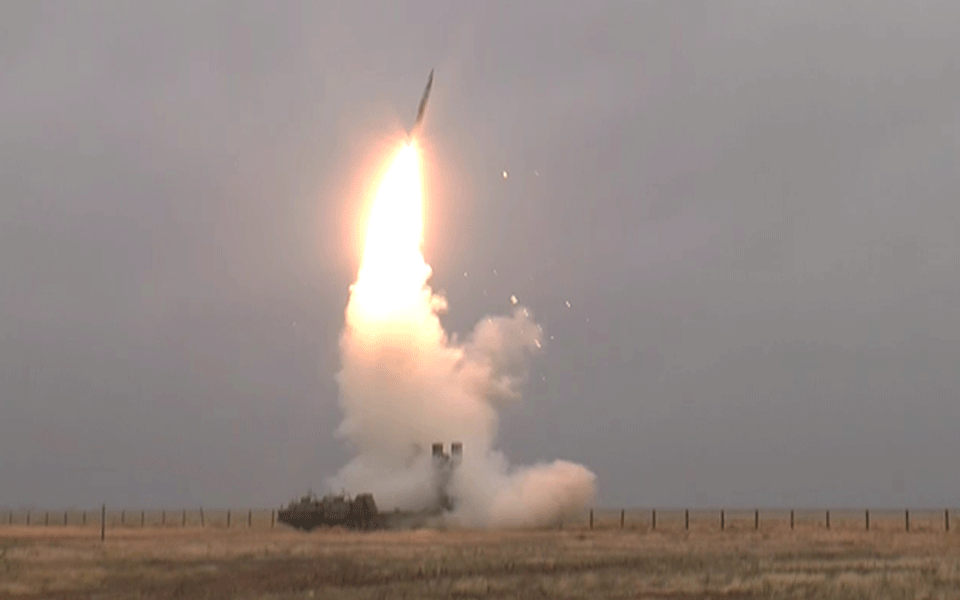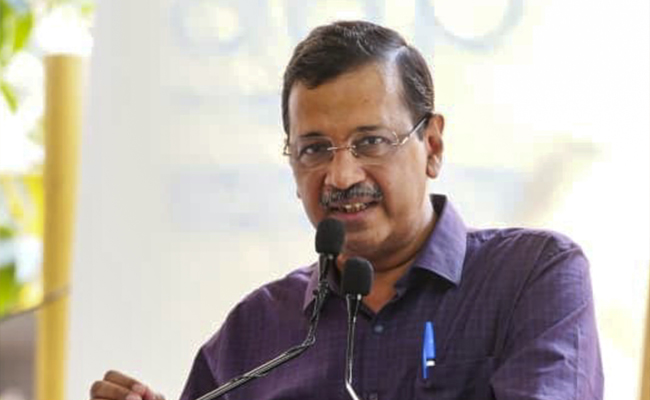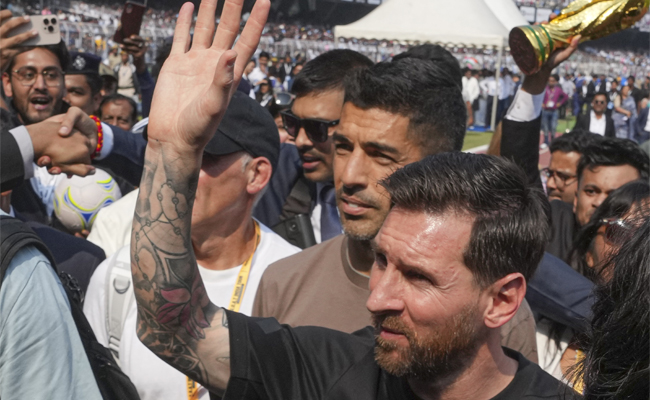New Delhi, Oct 05: The S-400 Triumf air defence system deal, inked by India and Russia Friday notwithstanding the US pressure of sanctions, can engage up to 36 targets at a time and simultaneously launch 72 missiles.
The long and medium range air defense missile system, which Air Force Chief B S Dhanoa said will provide a much needed "booster" to the Air Force, is designed to destroy air attacks, including stealth aircraft and any other aerial targets.
"The sides welcomed the conclusion of the contract for the supply of the S-400 Long Range Surface to Air Missile System to India," a joint statement released after the delegation level talks between Prime Minister Narendra Modi and Russian President Vladmir Putin said.
The delivery of the missile systems, tipped to be over $5 billion, will start in 24 months.
Acquiring the missile system will help repulse the air attacks by India's adversaries, especially Pakistan and China.
The signing of the deal assumes significance as China, too, has signed a deal with Russia to procure the same missile system.
"This is the most lethal weapons system in the world and it provides four different types of layered air defence," Air Vice-Marshal (retd) Manmohan Bahadur told PTI.
However, the deal comes under the purview of Countering America's Adversaries Through Sanctions Act (CAATSA), which targets Russia, Iran, and North Korea.
India has conveyed to the US its necessity to procure this air defence missile system.
In 1999, the system was demonstrated for the first time at the Kapustin Yar practice range (the Astrakhan Region) to then defence minister Igor Sergeyev. The trials of the most advanced air defense missile system were carried out in the 2000s.
The missile system has been in service since April 2007.
The S-400 is based on the S-300PMU2 air defense missile complex.
The air defence missile system comprises a combat control post, a three-coordinate jam-resistant phased array radar to detect aerial targets, six-eight air defence missile complexes (with up to 12 transporter-launchers, and also a multi-functional four-coordinate illumination and detection radar), a technical support system, a missile transporting vehicles and a training simulator, experts said.
The S-400 system can also additionally include an all-altitude radar (detector) and movable towers for an antenna post, they said.
The target detection range of this system is up to 600 kilometres and its tactical ballistic missile destruction range varies from five kilometres to 60 kilometres.
Courtesy: ndtv.com
Let the Truth be known. If you read VB and like VB, please be a VB Supporter and Help us deliver the Truth to one and all.
Panaji (PTI): As part of a crackdown against tourist establishments violating laws and safety norms in the aftermath of the Arpora fire tragedy, Goa authorities on Saturday sealed a renowned club at Vagator and revoked the fire department NOC of another club.
Cafe CO2 Goa, located on a cliff overlooking the Arabian Sea at Vagator beach in North Goa, was sealed. The move came two days after Goya Club, also in Vagator, was shut down for alleged violations of rules.
Elsewhere, campaigning for local body polls, AAP leader Arvind Kejriwal said the fire incident at Birch by Romeo Lane nightclub at Arpora, which claimed 25 lives on December 6, happened because the BJP government in the state was corrupt.
An inspection of Cafe CO2 Goa by a state government-appointed team revealed that the establishment, with a seating capacity of 250, did not possess a no-objection certificate (NOC) of the Fire and Emergency Services Department. The club, which sits atop Ozrant Cliff, also did not have structural stability, the team found.
The Fire and Emergency Services on Saturday also revoked the NOC issued to Diaz Pool Club and Bar at Anjuna as the fire extinguishers installed in the establishment were found to be inadequate, said divisional fire officer Shripad Gawas.
A notice was issued to Nitin Wadhwa, the partner of the club, he said in the order.
Campaigning at Chimbel village near Panaji in support of his party's Zilla Panchayat election candidate, Aam Aadmi Party leader Kejriwal said the nightclub fire at Arpora happened because of the "corruption of the Pramod Sawant-led state government."
"Why this fire incident happened? I read in the newspapers that the nightclub had no occupancy certificate, no building licence, no excise licence, no construction licence or trade licence. The entire club was illegal but still it was going on," he said.
"How could it go on? Couldn't Pramod Sawant or anyone else see it? I was told that hafta (bribe) was being paid," the former Delhi chief minister said.
A person can not work without bribing officials in the coastal state, Kejriwal said, alleging that officers, MLAs and even ministers are accepting bribes.





